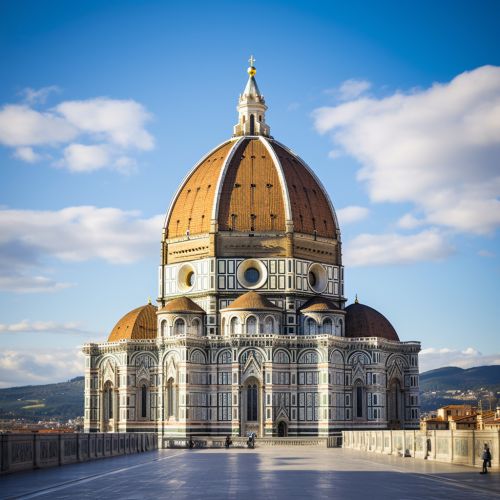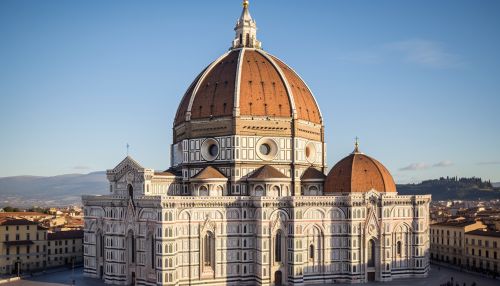Brunelleschi
Early Life and Education
Filippo Brunelleschi was born in 1377 in Florence, Italy. His father was a notary, a position of considerable respect in the Italian city-states of the time. Despite his father's profession, Brunelleschi did not follow in his footsteps. Instead, he was apprenticed to a goldsmith and clockmaker, a trade that would provide him with the technical skills that would later prove invaluable in his architectural work.
Career
Brunelleschi's career began in earnest when he entered the competition to design the Florence Cathedral's dome in 1418. His innovative design, which involved the use of a double shell with a space in between for structural stability, won him the commission. This marked the beginning of his career as an architect, a field in which he would make significant contributions.
Architectural Innovations
Brunelleschi's work on the Florence Cathedral's dome was groundbreaking in several ways. Firstly, he introduced the use of linear perspective, a technique that allowed for the accurate depiction of architectural space in two dimensions. This was a significant advancement in the field of architecture, as it allowed for more accurate planning and design.
Secondly, Brunelleschi's design for the dome itself was innovative. The use of a double shell with a space in between for structural stability was a novel solution to the problem of how to construct a dome of such a large scale. This design not only allowed for the construction of the dome, but also ensured its stability and longevity.
In addition to these innovations, Brunelleschi also introduced the use of hoisting machines in construction. These machines, which he designed himself, were used to lift the heavy materials needed for the construction of the dome. This not only made the construction process more efficient, but also safer for the workers involved.
Later Life and Legacy
Brunelleschi continued to work on the Florence Cathedral until his death in 1446. His innovative designs and techniques had a profound impact on the field of architecture, influencing generations of architects to come. Today, he is considered one of the founding fathers of Renaissance architecture, and his work on the Florence Cathedral is regarded as one of the masterpieces of Western architecture.
See Also


